| Columns Retired Columns & Blogs |
Thanks very much!
The output impedance of the D-105u from its fixed outputs was considerably higher than spec at 1200 ohms, though the variable outputs offered a lower source value of 645 ohms. Long cables should be avoided when the player is used from its fixed outputs, though the lower impedance of the variable outputs is sensible when the player is fed straight to the power amplifier. The maximum output level was 2.11V from either set of outputs, while the output was polarity-correct from both outputs, as shown by the linear-phase impulse response (fig.1). Channel separation was better than 80dB across most of the band, dropping to below 70dB above 10kHz.
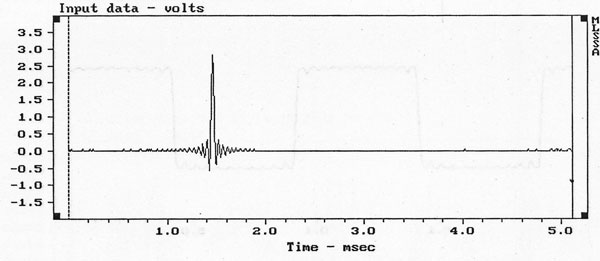
It was not surprising that GL heard no difference in response with pre-emphasized discs, as there was no error apart from that due to the player's inherent departure from a flat response. As can be seen from fig.2, however, the D-105u does roll off a little early at the frequency extremes, probably correlating with GL's observation that its sound was a little "dark." This premature HF rolloff can also be seen in the squarewave response, fig.3, by the slightly lazy leading edges to the waveshape. Note also that the Gibbs Phenomenon ringing at the waveform's leading edges is clipped. This is because the digital filter is optimized for low-level resolution, leaving no headroom at 0dBFS.
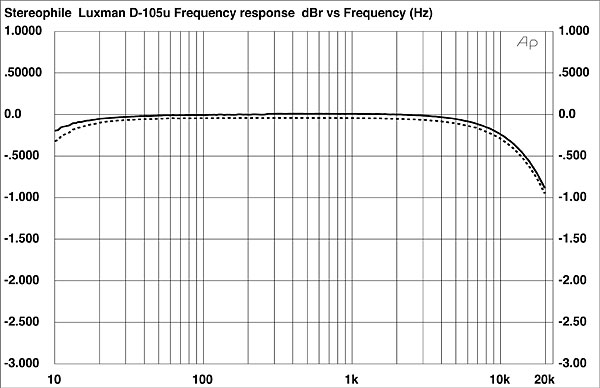
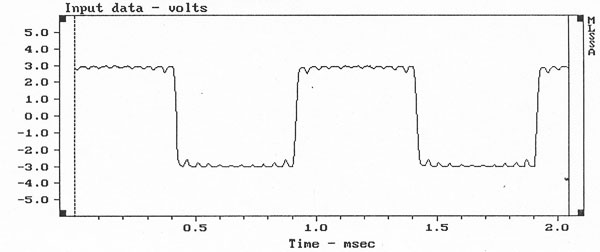
Looking at the audio-band spectra for both channels while the player reproduces a dithered 1kHz tone at –90.31dB (fig.4) reveals the D-105u's DACs to be not particularly well set up during manufacture. Note that while the left channel, the solid line, performed well despite suffering from a little compression, the right channel doesn't seem to have much 1kHz content at all, there being instead a peak at the second-harmonic frequency, 2kHz. In addition, both channels have power-supply noise apparent at 60Hz, 120Hz, and 240Hz, though the levels are still low. (The level of hum was very dependent on the exact way in which the player was connected to the Audio Precision System One; the measurements used to derive fig.4 were taken with the grounding arranged to give the lowest hum.)
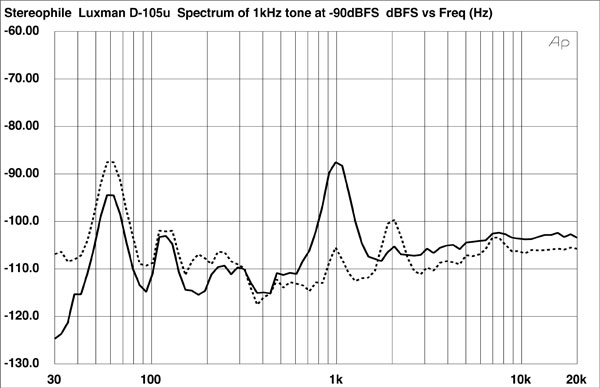
The fact that the frequency of the signal is doubled at low levels by the Luxman's right channel is revealed by looking at the waveforms of an undithered 1kHz tone at –90.31dB. Fig.5 shows the left channel, which can be seen to feature a 1kHz periodicity. Fig.6, however, looks just like noise, and it takes a Fast Fourier Transformation of the frequency domain to reveal that there is a periodic nature to the signal. But as shown by fig.7, the strongest component of that periodicity is at twice the real frequency, 2kHz instead of 1kHz.
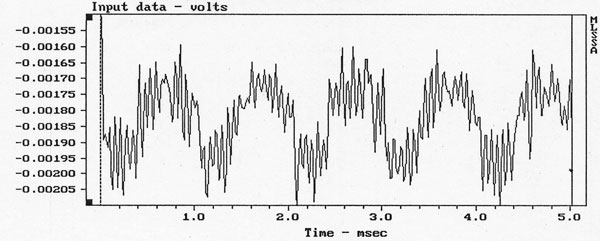
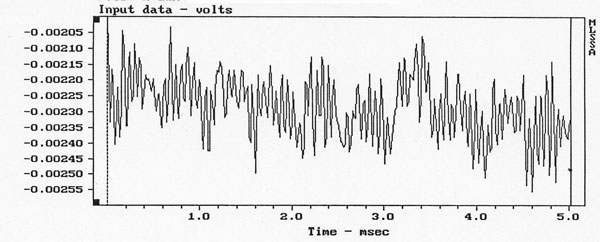
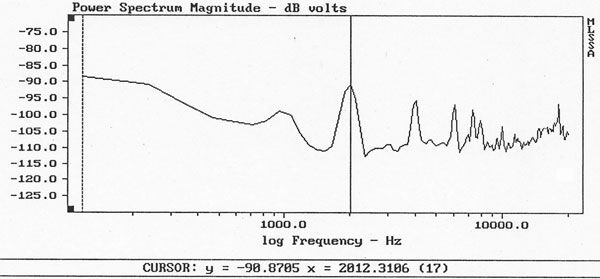
The reason for this problem is that the right channel's DAC is so far out of alignment that its output with all the 16 input bits set to "1," which represents a level one LSB below zero, is actually at least one LSB above zero. The test waveform used to generate figs.5 and 6, which should repeatedly move from "–1" up to "0," up to "+1," back down to "0," then down again to "–1," actually reproduces as a double-frequency waveform, moving down from "–1" to "0," up to "+1," down to "0," then up to "–1." In effect, as the Lux's output level drops toward –90dB, the fundamental frequency disappears, shown by the right channel's linearity plot, fig.8, which is plotted with a larger than usual vertical scale. For comparison, fig.9 shows the left-channel linearity plot with the same vertical scaling.
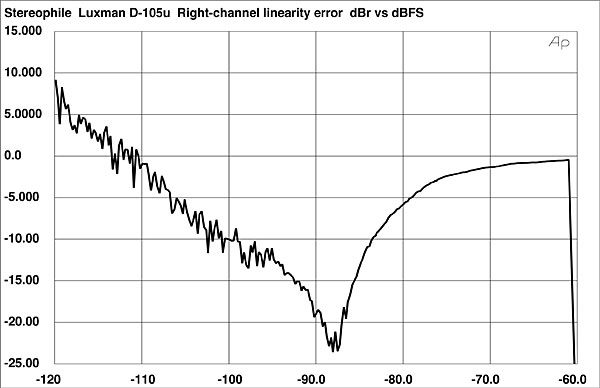
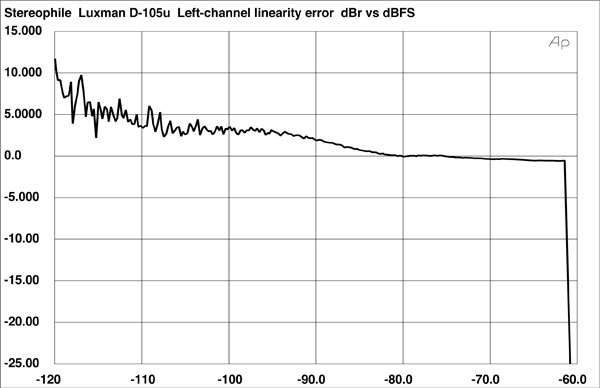
This poor DAC performance, which I found to be quite audible with the low-level test tones used, might also result in higher than normal levels of distortion. Fig.10 shows the spectrum of the Luxman's right-channel output while reproducing a 1:1 mix of 19 and 20kHz tones. While high-frequency intermodulation levels are satisfyingly low, note that a significant 1kHz difference product exists, at just –55.9dB.
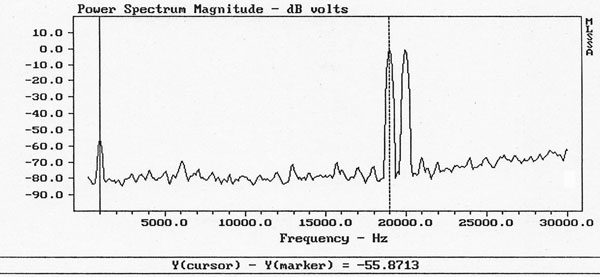
For comparison, look at fig.11, which shows the performance of a cheap Magnavox CDB472 on this test. Although the Philips digital filter is much less good at suppressing the 24.1kHz alias of the 20kHz component (shown by the cursor position) than the Luxman's NPC filter, note that there is no 1kHz difference product in its output spectrum. Maybe this behavior of the D-105u ties in with Guy's observation concerning the "hollowness" to Chet Baker's voice. It might also contribute to his feeling that the player featured a little sonic congestion.
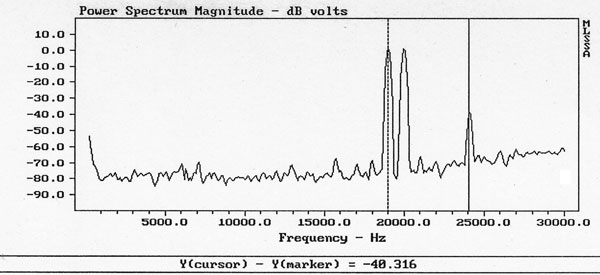
I must admit to being surprised by the misalignment of the D-105u's right-channel DAC. Such poor quality control is not uncommon in very cheap players, in my experience, where every penny spent during manufacture is critical. But in a $1200 player, I feel that part of the justification for the higher price is the owner's peace of mind that comes from knowing that the component has been well set up. I hope that our review sample is not representative of Luxman's production (though I'm somewhat alarmed to note that there appears to be no internal adjustment possible of the D-105u's intrinsic DAC linearity).—John Atkinson


... less expensive choice would have been the Sony CDP-X55ES.
http://www.thevintageknob.org/sony-CDP-X55ES.html
http://www.hifi-classic.net/review/sony-cdp-x55es-6.html
http://www.lampizator.eu/lampizator/references/Sony%20X55ES/Sony5ES.html